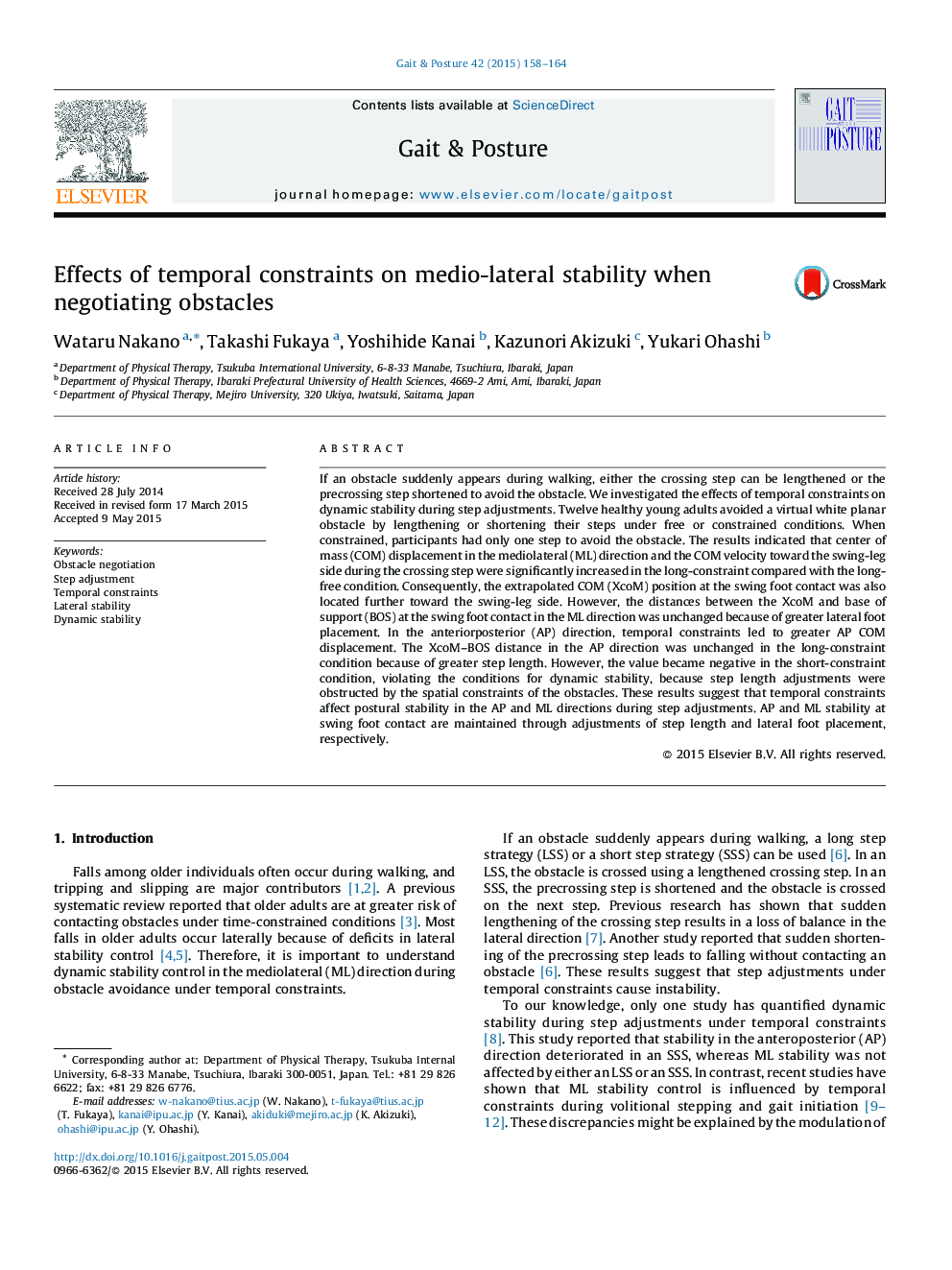| کد مقاله | کد نشریه | سال انتشار | مقاله انگلیسی | نسخه تمام متن |
|---|---|---|---|---|
| 6206019 | 1265637 | 2015 | 7 صفحه PDF | دانلود رایگان |
- We tested the effects of time constraints on stability during step adjustments.
- Time constraints affect the postural stability in the AP and ML directions.
- ML stability was maintained by adjustments of lateral foot placement.
- AP stability was maintained by increase of step length.
- Temporally constrained step shortening resulted in AP instability.
If an obstacle suddenly appears during walking, either the crossing step can be lengthened or the precrossing step shortened to avoid the obstacle. We investigated the effects of temporal constraints on dynamic stability during step adjustments. Twelve healthy young adults avoided a virtual white planar obstacle by lengthening or shortening their steps under free or constrained conditions. When constrained, participants had only one step to avoid the obstacle. The results indicated that center of mass (COM) displacement in the mediolateral (ML) direction and the COM velocity toward the swing-leg side during the crossing step were significantly increased in the long-constraint compared with the long-free condition. Consequently, the extrapolated COM (XcoM) position at the swing foot contact was also located further toward the swing-leg side. However, the distances between the XcoM and base of support (BOS) at the swing foot contact in the ML direction was unchanged because of greater lateral foot placement. In the anteriorposterior (AP) direction, temporal constraints led to greater AP COM displacement. The XcoM-BOS distance in the AP direction was unchanged in the long-constraint condition because of greater step length. However, the value became negative in the short-constraint condition, violating the conditions for dynamic stability, because step length adjustments were obstructed by the spatial constraints of the obstacles. These results suggest that temporal constraints affect postural stability in the AP and ML directions during step adjustments. AP and ML stability at swing foot contact are maintained through adjustments of step length and lateral foot placement, respectively.
Journal: Gait & Posture - Volume 42, Issue 2, July 2015, Pages 158-164
